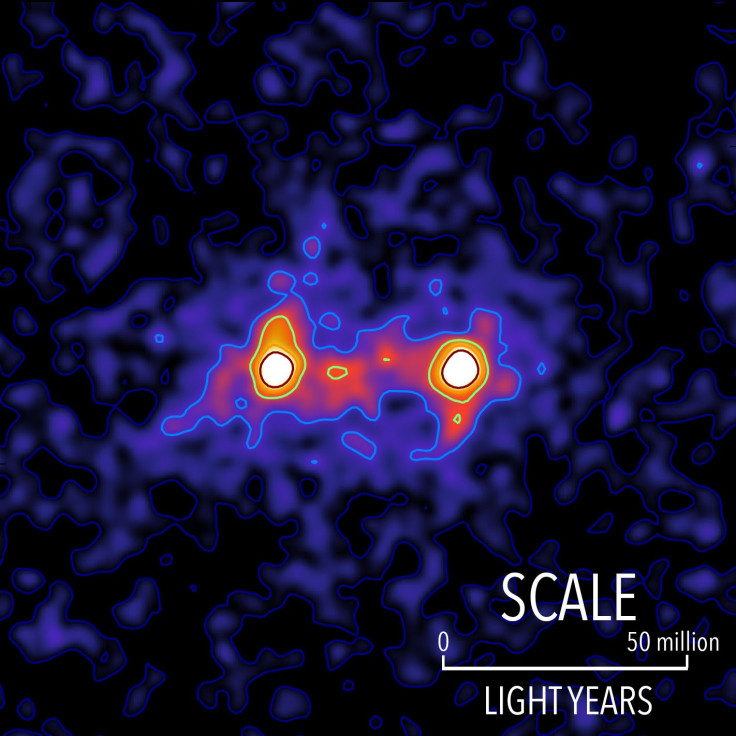First-Ever 'Image' Of Dark Matter Reveals Filaments That Link Galaxies

Dark matter — the mysterious stuff that we know is there, but have no clue what it’s made of. This is because despite accounting for roughly 85 percent of the universe’s mass, dark matter is invisible — it does not absorb, reflect or emit any light.
Scientists have long believed that in addition to being responsible for a significant chunk of galaxies’ mass, dark matter also serves as a bridge that connects vast galaxies to each other. Now, a team of astronomers has succeeded in taking a composite “image” that they say shows the presence of such dark matter filaments.
Read: Black Hole Mergers May Yield Clues About Dark Matter
The composite image was created by combining images from 23,000 galaxy pairs located 4.5 billion light-years away.
“For decades, researchers have been predicting the existence of dark-matter filaments between galaxies that act like a web-like superstructure connecting galaxies together,” Mike Hudson, a professor of astronomy at the University of Waterloo, and the author of a paper describing the observations, said in a statement released Wednesday. “This image moves us beyond predictions to something we can see and measure.”
The question is, if dark matter is invisible, how did these astronomers manage to snap a photograph of it? To do this, they used a technique called weak gravitational lensing.
Gravity, as Einstein’s theory of general relativity tells us, warps space-time. Occasionally, when the stars are aligned just right, this warping of the fabric of the universe results in a phenomenon known as gravitational lensing, wherein the strong gravitational field of a foreground object acts as a lens that “bends” light from an object in the background and allows scientists to catch a glimpse of what might otherwise have remained invisible.
In this case, the researchers looked for distortions to light being emitted by background galaxies caused by foreground dark matter filaments. The effect was measured as part of a multi-year sky survey at the Canada-France-Hawaii Telescope.
“By using this technique, we’re not only able to see that these dark matter filaments in the universe exist, we’re able to see the extent to which these filaments connect galaxies together,” study co-author Seth Epps, a master’s student at the University of Waterloo at the time, said in the statement.
The observations could help scientists seeking to understand what dark matter is made of. Currently, the hypothetical Weakly Interacting Massive Particles, which are believed to interact with normal matter through gravity and the weak nuclear force, are the leading candidates to explain the composition of dark matter, but what class of particles these WIMPs belong to is not yet known.
Scientists think gamma rays can help reveal the presence of some of the types of proposed dark matter particles. However, so far, searches carried out using NASA’s powerful Fermi gamma-ray space telescope have failed to reveal any convincing signals.
© Copyright IBTimes 2024. All rights reserved.






















